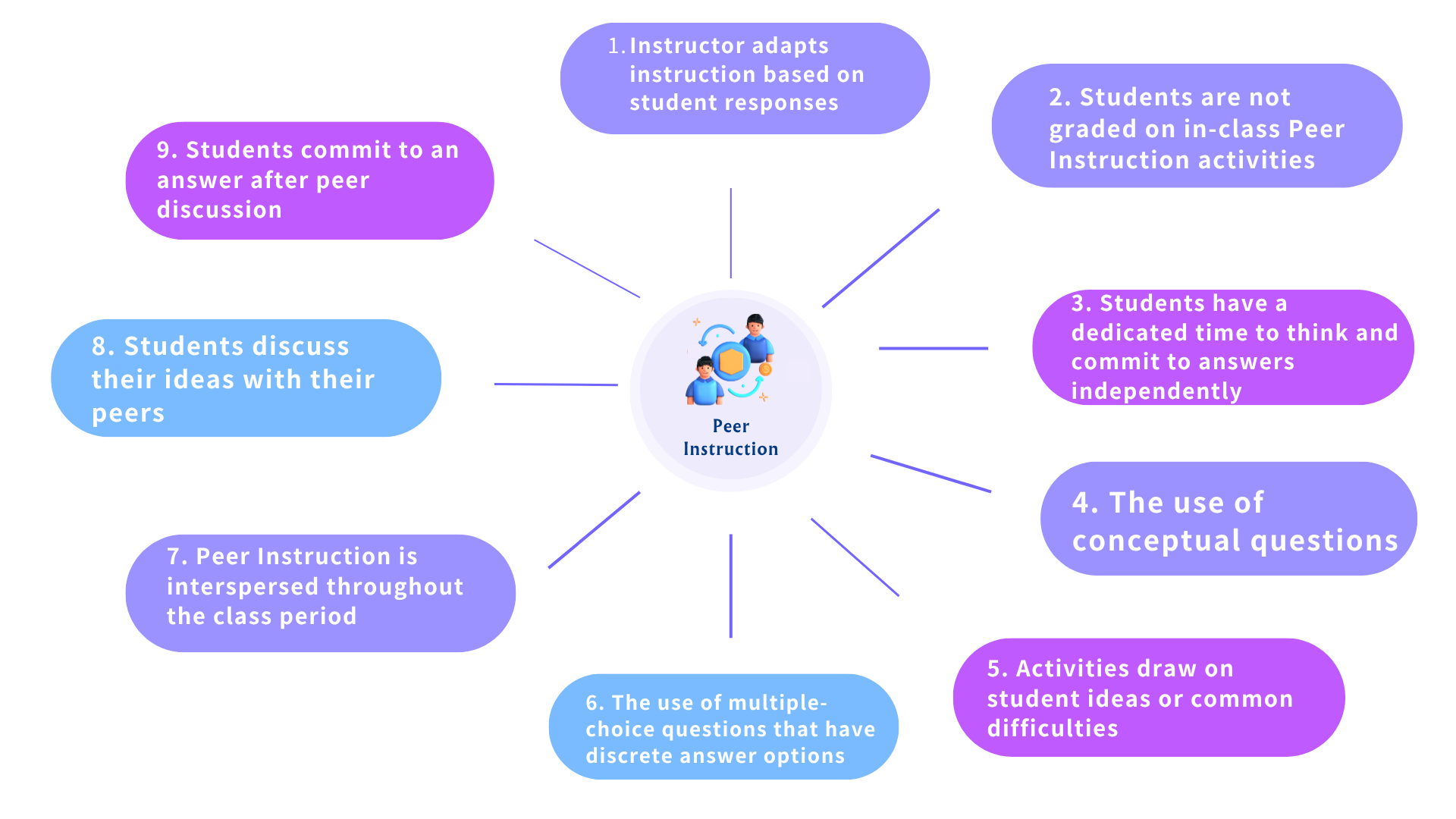What is Peer Instruction?
Peer instruction is a well-researched active-learning technique that has been widely adopted in college science classes.(Knight & Brame, 2018) With Peer instruction, lectures are interspersed with conceptual questions, called ConcepTests, designed to expose common difficulties in understanding the material. The students are given one to two minutes to think about the question and formulate their own answers; they then spend two to three minutes discussing their answers in groups of three to four, attempting to reach a consensus on the correct answer. This process forces the students to think through the arguments being developed and enables them (as well as the instructor) to assess their understanding of the concepts even before they leave the classroom. (Mazur, 1997)
The nine key features of Peer Instruction (Dancy et al., 2016):

ConcepTests Selection(Crouch & Mazur, 2001)
Explore an important concept
Expose common difficulties with the materials
Appropriate difficulty level
30%-70% of the students answer correctly before discussions
Highlights from DKU Faculty Discussions
General Tips
Selection of questions is the key. We have to make sure enough of the students have the correct mindset so when we let them instruct each other they are doing it with good knowledge rather than percolating bad knowledge.
We have to test students and force them to make a stand before they engage in peer instruction, otherwise they have a tendency to wait for the answer like they do in regular lectures.
Give students time to think pre test and post test.
Make it low stake so students are willing to make a move but not so low that students don’t bother.
Peer Instruction can be applied in courses across the board in different disciplines at different levels.
What makes a good question for Peer Instruction?
require higher-order thinking, not just memorization.
focus on a single concept so the discussion doesn’t get sidetracked.
aim to encourage conversation and help students understand theoretical concepts and application to real world.
Individuals would have 50-70% understanding/ideas of the question before discussion and 100% after thorough discussion.
no right or wrong answer, but lead to deeper thinking and understanding.
References
Mazur, E. (1997). Peer Instruction: A User’s Manual.
Knight, J. K., & Brame, C. J. (2018). Peer Instruction. CBE—Life Sciences Education, 17(2), fe5. https://doi.org/10.1187/cbe.18-02-0025
Dancy, M., Henderson, C., & Turpen, C. (2016). How faculty learn about and implement research-based instructional strategies: The case of Peer Instruction. Physical Review Physics Education Research, 12(1), 010110. https://doi.org/10.1103/PhysRevPhysEducRes.12.010110
Crouch, C. H., & Mazur, E. (2001). Peer Instruction: Ten years of experience and results. American Journal of Physics, 69(9), 970–977. https://doi.org/10.1119/1.1374249
Additional Resources
Peer Instruction – LSE Resources. (n.d.). Retrieved August 21, 2023, from https://lse.ascb.org/evidence-based-teaching-guides/peer-instruction/
Insights From the Science of Learning Can Inform Evidence-Based Implementation of Peer Instruction https://www.frontiersin.org/articles/10.3389/feduc.2018.00033/full
This article lists the outcomes of some common modifications to the original Peer Instruction procedure – Quick start guide to flipping your classroom with peer instruction: https://peerinstruction.wordpress.com/2013/01/15/quick-start-guide-to-flipping-your-classroom-with-peer-instruction/
Additional Resources on just-in-time-teaching:
Additional Resources on ConcepTests:


